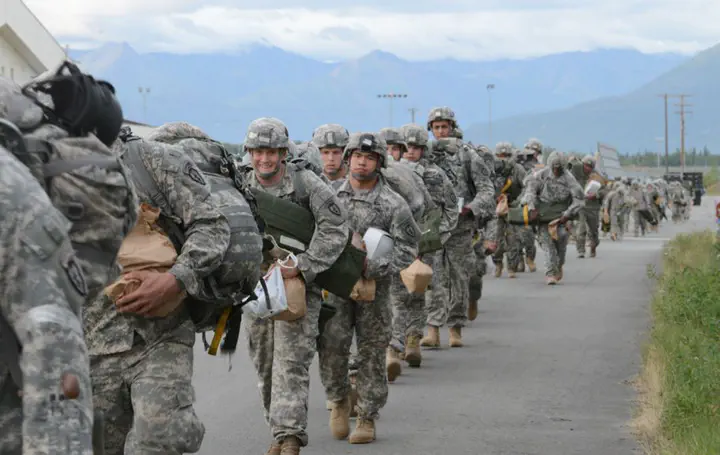Assessment of the Proposed Force Reduction of the 4-25th Airborne Brigade Combat Team

Download this paper
In July 2015, the U.S. Army announced that Alaska’s 4th Airborne Brigade Combat Team of the 25th Infantry Division (hereafter referred to as the 4-25th) stationed at Joint Base Elmendorf-Richardson (JBER) would be downsized over the next 27 months by 2,630 active duty soldiers by the end of fiscal year (FY) 2017. The downsizing of the 4-25th would be part of federal budget driven cuts of as many as 30,000 soldiers throughout the U.S. Army.
When the cuts to the 4-25th were initially announced, the Municipality of Anchorage (MOA) applied for and received a Department of Defense (DOD) grant to conduct an independent study of the economic impacts of the force reduction on the MOA and in the Mat-Su Borough (MSB). In February 2016, the MOA awarded a contract to a study team consisting of Northern Economics Inc., an Anchorage-based economics consulting firm and the Anchorage office of AECOM, Inc. a global technical services firm.
The proposed force reductions throughout the Army have been controversial, but the cuts to the 4-25th were particularly so, given the increasing threats to the Arctic from Russian forces as argued by U.S Senator Dan Sullivan and members of Alaska’s Congressional delegation. On March 21, 2016, the U.S. Army officially “delayed” the force reduction, implying that the reduction is no longer in play in the current round of discussions. However, usage of the word “delayed” also implies that the reduction could be revisited.
Notwithstanding of the official delay of the force reduction, the study has been completed so that the MOA, the DOD, and members of the public can better understand the potential impacts of proposed force reduction. For purposes of the analysis, it was assumed that a future reduction of 2,630 soldiers from the 4-25th at JBER (the same magnitude as originally announced) would begin in the summer of 2017 and be completed by the end September 2019 (the end of FY 2019).
One key finding of the study is that in general, information about the 4-25th and U.S. Army Alaska’s (USARAK) activities at JBER is not well understood by many members of the public. There seemed to be a general awareness that reductions at JBER had been proposed, but the context of those reductions relative to JBER as a whole was missing. Based on assigned strength levels supplied by JBER, the proposed reduction represents approximately 23 percent of the 10,204 active duty personnel assigned to JBER as of January 2016; however, some members of the public appeared to have been under the impression that the cuts would be much larger or even that the whole base would be closing. While the cuts would reduce USARAK personnel at JBER by approximately 51 percent, both the Army and the Air Force would continue to have a major presence in Anchorage. In addition to its active duty forces, JBER is also the home base for 3,328 reserves and guard personnel, and, as of January 2016, employed an additional 3,562 civilians. The study notes that the proposed force reduction would have little or no effect on these personnel and employees.
Another key finding of the analysis is that while the proposed reduction for the 4-25th would be an important economic event, it is unlikely to significantly alter the general trends of population and employment growth in the MOA and the MSB.